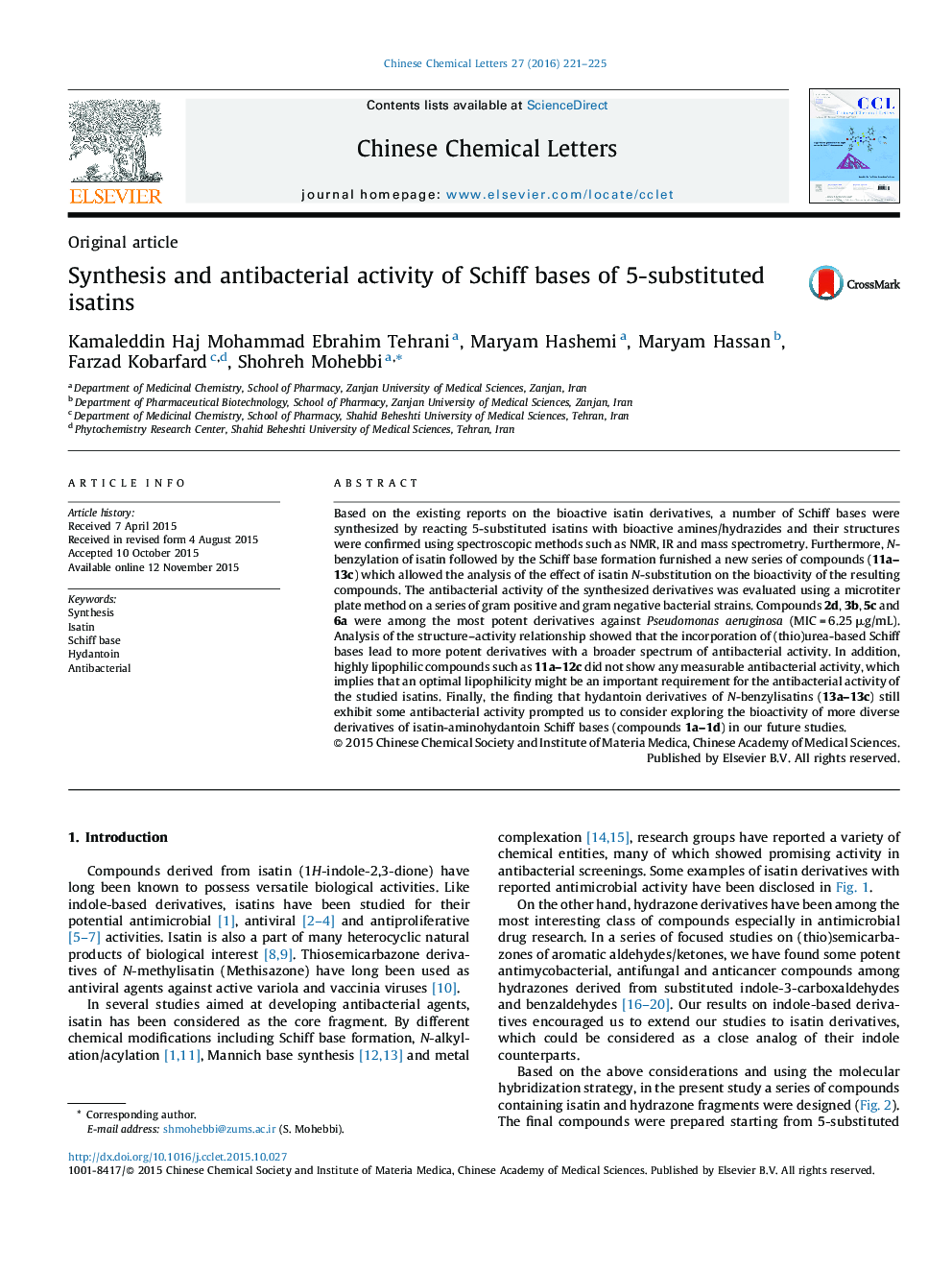| Article ID | Journal | Published Year | Pages | File Type |
|---|---|---|---|---|
| 1257021 | Chinese Chemical Letters | 2016 | 5 Pages |
Based on the existing reports on the bioactive isatin derivatives, a number of Schiff bases were synthesized by reacting 5-substituted isatins with bioactive amines/hydrazides and their structures were confirmed using spectroscopic methods such as NMR, IR and mass spectrometry. Furthermore, N-benzylation of isatin followed by the Schiff base formation furnished a new series of compounds (11a–13c) which allowed the analysis of the effect of isatin N-substitution on the bioactivity of the resulting compounds. The antibacterial activity of the synthesized derivatives was evaluated using a microtiter plate method on a series of gram positive and gram negative bacterial strains. Compounds 2d, 3b, 5c and 6a were among the most potent derivatives against Pseudomonas aeruginosa (MIC = 6.25 μg/mL). Analysis of the structure–activity relationship showed that the incorporation of (thio)urea-based Schiff bases lead to more potent derivatives with a broader spectrum of antibacterial activity. In addition, highly lipophilic compounds such as 11a–12c did not show any measurable antibacterial activity, which implies that an optimal lipophilicity might be an important requirement for the antibacterial activity of the studied isatins. Finally, the finding that hydantoin derivatives of N-benzylisatins (13a–13c) still exhibit some antibacterial activity prompted us to consider exploring the bioactivity of more diverse derivatives of isatin-aminohydantoin Schiff bases (compounds 1a–1d) in our future studies.
Graphical abstractA series of Schiff bases of 5-substituted isatins were synthesized and tested for their antibacterial activity. Among the tested derivatives, compounds 2d, 3b, 5c and 6a showed promising activity against P. aeruginosa.Figure optionsDownload full-size imageDownload as PowerPoint slide
